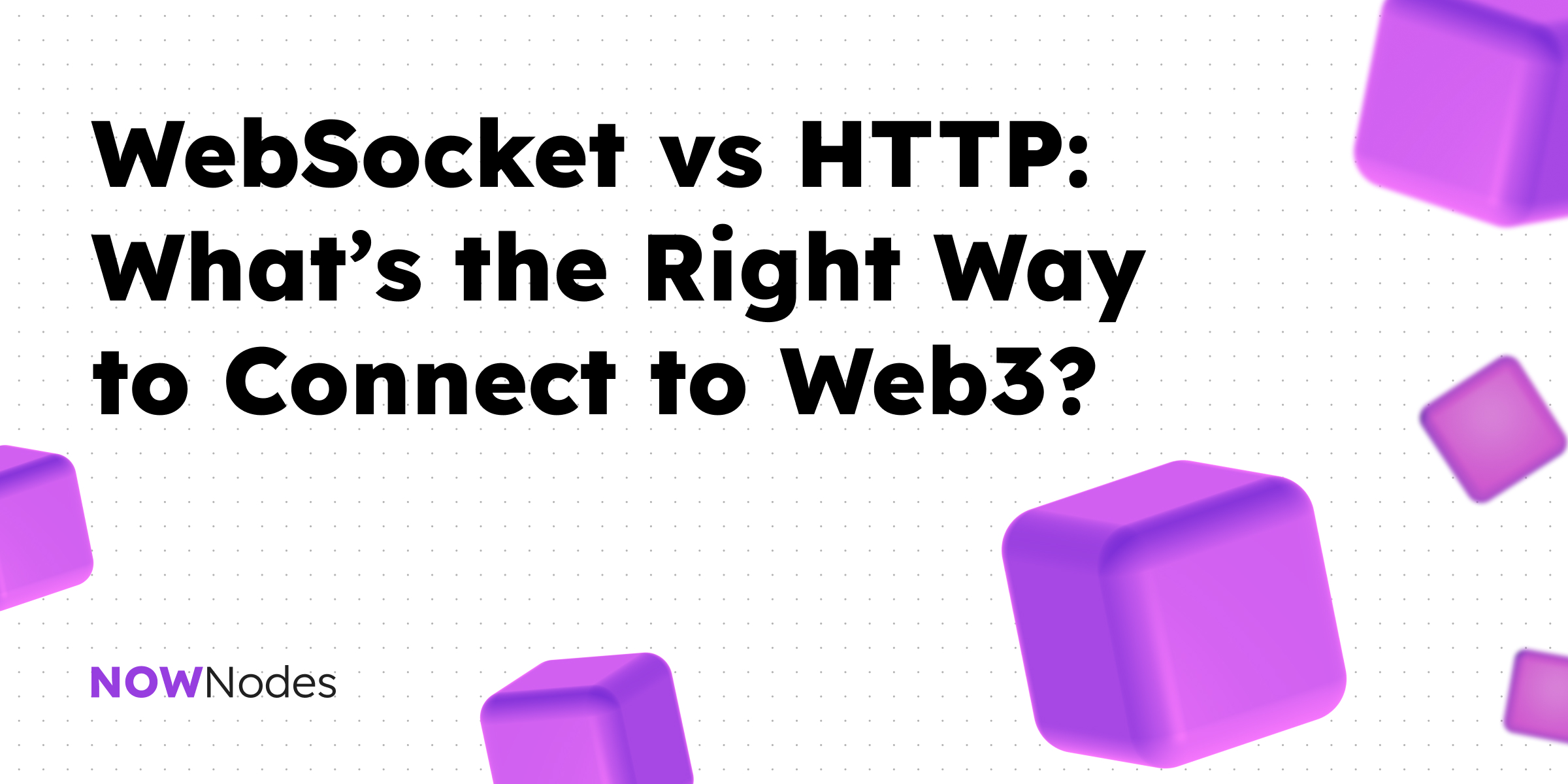If you’re building in Web3, whether it’s a dApp, a wallet, or a data dashboard, one of the first questions you’ll run into is this:
How should your app talk to the blockchain?
More specifically – should you connect to your Web3 node using HTTP or WebSocket?Both are widely used, but they work very differently. Each has strengths, trade-offs, and ideal use cases. In this post, we’ll break down the difference between WebSocket vs HTTP, why it matters for Web3, and how NOWNodes supports both – so you can choose what’s best for your project.
First, what is HTTP?
If you’ve used any API before, chances are it was over HTTP. It’s the backbone of how data moves across the web.
In simple terms, HTTP (Hypertext Transfer Protocol) is a one-way conversation. Your app sends a request (like “What’s the balance of this address?”), and the server responds. End of story.
In the Web3 world, HTTP is perfect for one-off calls, like:
- Checking an address balance
- Getting a specific block or transaction
- Sending a signed transaction to the network
It’s straightforward, easy to implement, and great when you only need updates occasionally.
What is a WebSocket?
A WebSocket is a more advanced type of connection. It’s not just a request-and-wait setup — it’s a two-way, always-on communication channel between your app and the blockchain node.
Once the connection is open, the node can push updates to you as they happen — no need for constant checking.
This makes WebSocket ideal for:
- Real-time updates when new blocks are mined
- Watching for new transactions to a wallet
- Tracking events from smart contracts in real time
If your app depends on live blockchain data, WebSocket API is the way to go.
WebSocket vs HTTP — what’s the difference in practice?
Let’s compare how they actually behave when connected to a Web3 node:
| Feature | HTTP | WebSocket |
|---|---|---|
| Connection type | Request/Response (one-time) | Persistent (always open) |
| Direction | One-way | Two-way (client & server can both talk) |
| Real-time support | Needs polling | Native real-time support |
| Resource efficiency | Can become inefficient with frequent polling | Very efficient for live data |
| Best for | Basic reads/writes | Subscriptions, live feeds, event listeners |
| Complexity | Easy to set up | Slightly more setup, but powerful |
If you only need to grab data now and then, HTTP will get the job done. But if your app needs to react instantly to on-chain activity, WebSocket is a much better fit.
Where NOWNodes fits in
At NOWNodes, we offer both HTTP and WebSocket access to over 110+ blockchains — including Ethereum, Bitcoin, and more: you can check it here!
- Want to pull data occasionally? Go with HTTP — it’s reliable, fast, and easy.
- Need to stay updated in real time? Use our WebSocket API to subscribe to blockchain events and get updates pushed directly to your app.
We’ve optimized both options for speed, scalability, and uptime — so you can focus on building while we handle the infrastructure.
Which one should you choose?
It depends on what you’re building.
Choose HTTP if:
- You’re fetching data only when a user requests it
- You want quick integration without managing live connections
- Your traffic is relatively low-frequency
Choose WebSocket if:
- Your app needs to know the moment something happens on-chain
- You’re working with trading, DeFi, or gaming apps that rely on real-time data
- You want a scalable solution without constant polling
Final thoughts
Understanding the difference between WebSocket vs HTTP isn’t just a technical detail — it’s a core decision that affects your app’s performance, responsiveness, and reliability.
The good news? With NOWNodes, you don’t have to choose one forever. We support both — and you can switch or combine them based on what your project needs at any moment.
Whether you’re running a simple script or building a full-scale Web3 platform, we’ve got the node connection you need.



